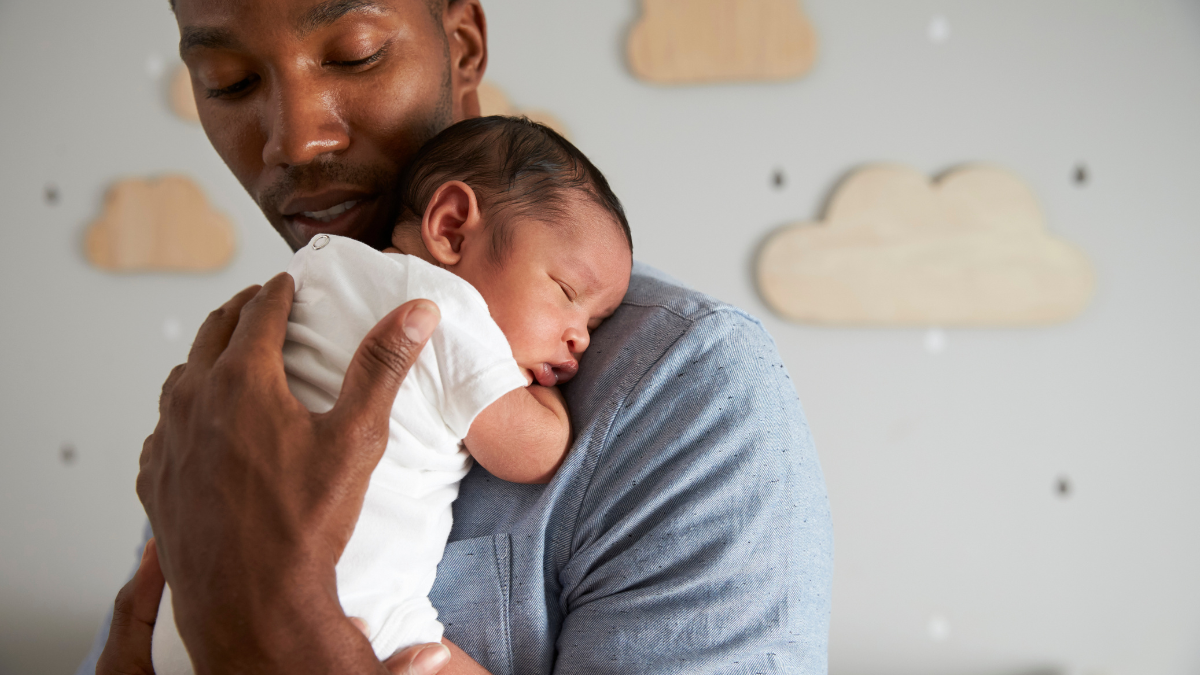
For most new parents, their little one’s restless sleep keeps them up at night. But why are babies always tossing and turning? Of the 16 to 17 hours of sleep they get per day, approximately half is devoted to the REM phase. REM sleep proportionately decreases as we age.
Let’s take a closer look at the two major types of sleep:
Similar to adults, babies experience each of these stages in a sleep cycle, progressing from stages 1 through 3. This process repeats multiple times throughout the night.
The average adult sleep cycle lasts between 90 and 120 minutes (with 20 to 25 percent in REM). In contrast, your infant’s sleep cycle lasts only 50 minutes (with 50 percent in REM) until they’re six months old. These shorter cycles and frequent REM phases are what causes restlessness in your baby.
The short answer is no. As tempting as it may be, picking up your little one every time they make a sound can disrupt their sleep. Newborns naturally cycle through light and deep sleep all night long.
Whenever they enter the REM phase, they instinctively toss and turn or even whimper. This is completely normal; if you leave them alone, they’ll slowly transition back into a deep sleep. Rushing to pick them up every time they’re restless, however, disrupts their sleep cycle.
Counting the days until you and your infant can enjoy longer, more restful sleep? Typically, they sleep for eight to nine hours during the day, then another eight hours at night. But each period of sleep is no longer than three hours, as they cannot store much energy and need to eat frequently.
At the three- to four-month mark, your baby may begin sleeping for five to six hours at a time. Most children experience deeper sleep (eight to 10 hours, uninterrupted) each night as they approach their first birthday. Of course, this varies from one individual to the next.
Although your newborn’s sleep cycle doesn’t offer much leeway, there are other strategies for tackling restless sleep. Here are a few tips for developing healthy sleep habits.
Establish a routine for putting your baby to sleep. This could include a warm bath, breastfeeding, or changing into their pajamas. The more consistently you practice this routine, the more quickly they’ll associate it with bedtime and become drowsy.
Engaging in physical activity close to bedtime overstimulates your child, making it difficult for them to fall asleep. Instead, opt for low-energy activities like reading a book or listening to a lullaby.
After living in the womb for nine months, newborns can’t yet distinguish night from day. You can help them adapt by allowing lots of natural light into your home in the daytime. At night, dim the lights and switch off bright screens to ease their transition to bedtime.
We always recommend placing your infant in their crib before they’ve actually fallen asleep. If they become accustomed to dozing off in your arms, they may struggle to sleep without you. Always place babies on their backs for sleep or naps. The mattress should be covered with a tightly fitted sheet, and the crib should be free of pillows, blankets, and toys to reduce the risk of SIDS.
Gently pat and soothe a crying baby in the middle of the night to reassure them of your presence and lull them back to sleep.
Many new parents often ask, what causes restless sleep? Shorter sleep cycles in newborns, among other factors, are usually to blame for tossing and turning. The problem resolves as your baby grows, but you may be able to help them adjust by following the tips outlined above, good luck you’ve got this!
© 2023 All rights reserved Baby & Toddler - part of parent promotions